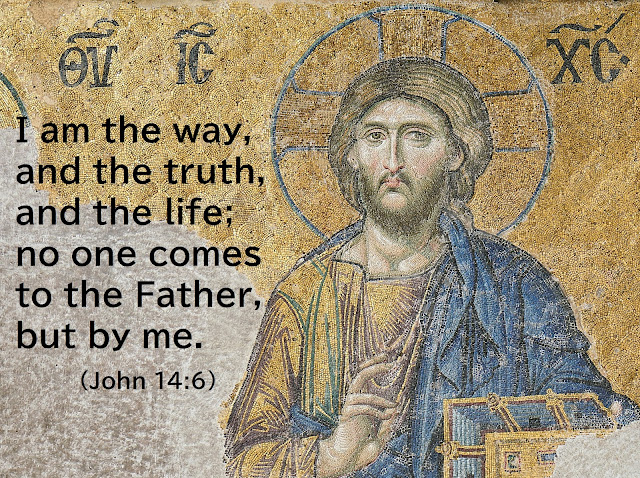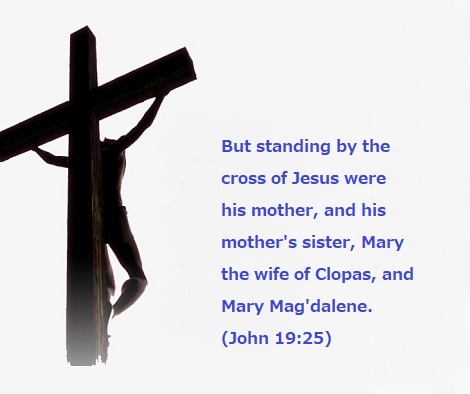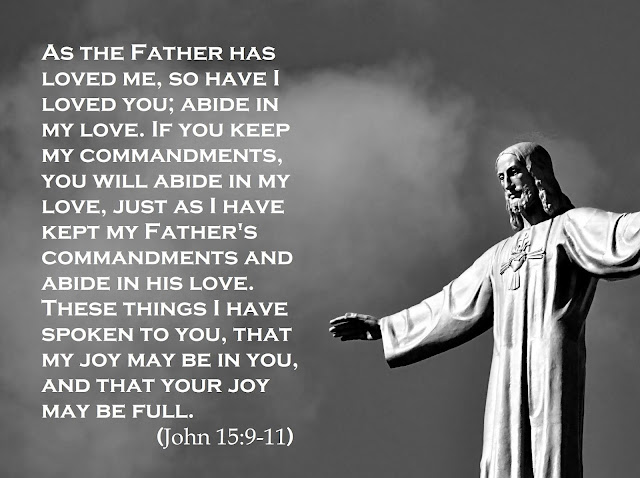The Estuary of Theology 28
“I Am the Way, and the Truth, and the Life”
Jesus, who said, “I am the way, and the truth, and the life; no one comes to the Father, but by me” (John 14:6), instituted the Holy Eucharist, which is born of the Word, and handed down the “way” concretely to the Christians, who live their lives with the Holy Spirit. The Holy Spirit guided them so that they can make the world view of Jesus Christ into their own with their senses by the Book of Revelation, which is “the revelation of Jesus Christ” (Revelation 1:1). This world view gets connected with the twofold spirituality of the Holy Spirit, who “will guide you into all the truth” (John 16:13), and we will recognize it by receiving the Holy Eucharist in the Mass. So, the most important thing is to concentrate on the voice coming in through our senses in reciting the Book of revelation.
For people, the “truth” is the “plan of God,” the will of the Father that has become the Word. It is directed toward “life.” This “life” is in the Holy Eucharist, born of the Word, as Jesus said, “[U]nless you eat the flesh of the Son of man and drink his blood, you have no life in you” (John 6:53). By saying, “He who eats my flesh and drinks my blood abides in me, and I in him” (John 6:56), Jesus guaranteed this “life” is concretely given to Christians through the Holy Eucharist. Furthermore, these words also assured of the bond of the Father and the Son between the Holy Eucharist and those who receive it, as Jesus explained: “In that day you will know that I am in my Father, and you in me, and I in you” (John 14:20).
Christians need to receive the Holy Eucharist, born of the Word they have heard with their ears, with all their senses by receiving it with their hands, touching it, seeing it, smelling it and eating it. All Christians must recognize that they have eaten the Holy Eucharist by touching it and looking at it so that they can become believing, not faithless, with this recognition. The risen Jesus said to his disciples about this as follows: “See my hands and my feet, that it is I myself; handle me, and see; for a spirit has not flesh and bones as you see that I have” (Luke 24:39), “Put your finger here, and see my hands; and put out your hand, and place it in my side; do not be faithless, but believing” (John 20:27).
This recognition is the deep understanding of the fact that God and man are united with the bond of the Father and the Son. Jesus instituted the Holy Eucharist, in which the “life” of God dwells, not only for the continuation of the atonement for sins but also to give the community, whose members receive it together, the recognition of the triune bond of “the Holy Spirit and the priest and the congregation,” encompassing the bond of the Father and the Son, that ties the community. The bond between “the Holy Spirit, the priest, and the congregation” that we experience at the Mass represents the new man and woman who form a bond with the Holy Spirit. The priest and the congregation who eat the same Eucharist in the presence of the Holy Spirit need to realize that they are both the clergy. This realization appears in Peter’s confession of faith, which is the “true word of God” that directly conveys the will of the heavenly Father, as discussed in the previous issue. Jesus said that he would build the “my church” on this rock. “[T]he powers of death shall not prevail against it” (Matthew 16:18).
When God created man, he said, “Let us make man in our image, after our likeness” (Genesis 1:26), and it is written, “So God created man in his own image, in the image of God he created him; male and female he created them” (Genesis 1:27). These show that it was important for God to grant man the same “image” of his own first, that is, to connect God and man with the bond of the Father and the Son. Then, he created man and woman in order to grant them “our likeness,” that is, the likeness of the triune God, between God, man, and woman.
Many of us take the words in Genesis, “Therefore a man leaves his father and his mother and cleaves to his wife, and they become one flesh” (Genesis 2:24), to be referring to a husband and wife becoming one flesh through intercourse. In reality, however, this is not the case. A husband and wife “cleave” to each other by intercourse but not become one flesh. It is the child conceived through intercourse that becomes “one flesh.” Here, as with other living things, the Word “Be!” is at work. On the other hand, unlike other creatures, the human child is infused with the free mind, which is the life of God. A human enters into existence by the Word “Be!” when God, who gives the free mind, a man, who gives the sperm and a woman, who gives the egg, are united. God, a man, and a woman give each other life so that a human will be created “in our image, after our likeness.”
When the lives of God and a man and a woman are united and become one flesh, “our likeness” is granted to a human. Also, within this one flesh, there exists the free mind that God gives and the Word “Be!” This free mind and the Word “Be!” become the bond of the Father and the Son and grant man “our image.” In the reproduction of man, God is fulfilling his will to create man “in our image, after our likeness.” However, many people are unaware of this fact. Yet, in the depths of their unconscious, this experience is remembered.
Genesis Chapter 5 reads, “This is the book of the generations of Adam. When God created man, he made him in the likeness of God. Male and female he created them, and he blessed them and named them Man when they were created” (Genesis 5:1-2). The phrase “he made him in the likeness of God” gives us a glimpse of this unconscious memory. However, we can see that God’s plan for Creation had already become a myth and was on the verge of fading away from the following phrase because the expression “in his own likeness, after his image” is in it: “When Adam had lived a hundred and thirty years, he became the father of a son in his own likeness, after his image, and named him Seth” (Genesis 5:3). People have become more attentive to the fact that their children are born “in his own likeness, after his image” rather than that they are created in the image and likeness of God. Eventually, a community of blood relations, which was to become the smallest unit of society and incorporated into its structure, was formed. This community is haunted by various “work of man,” as the first family of Adam and Eve was. Few people in the community see in their adult selves, or even in those of the next generation, the likeness of the triune God encompassing the bond of the Father and the Son realized by the words of God: “Let us make man in our image, after our likeness.”
A human is born when “God and a man and a woman” become a trinity encompassing the bond of the Father and the Son. It is one of the reasons why Jesus made people know the name of the Father and announced the descent of the Holy Spirit that he wanted people to realize also God is triune. He earnestly hoped that the people of the world would come to know the true and surprising relationship between God and man at the moment of their birth and approach God as freely as a child does.
The exercise of the Book of Revelation makes Christians acquire the worldview of Jesus Christ. The worldview of Jesus Christ makes people recall their unconscious memory of their bond with God and directs them to the Holy Eucharist, the “way” leading to the Father. And the formation of the twofold spirituality of the Holy Spirit leads Christians into all “truth” and teaches them that God’s plan, “Let us make man in our image, after our likeness,” will be realized in the Mass that gives us the Holy Eucharist, the “life.”
The voice reciting the words of the Book of Revelation enters our memory of senses like a river flowing through the middle of the street of the city and purifies all the senses. My understanding that the Book of Revelation is in the New Testament as an exercise confirms my previous reflections in “The Estuary of Theology.” I myself hope that I will be able to gain a better understanding of participating in the formation of the twofold spirituality of the Holy Spirit and the Mass, by continuing to practice the Book of Revelation. For this purpose, I will now leave “The Estuary of Theology” behind and continue my theological quest from the new perspective of “the worldview of Jesus Christ.”
The end.
New series of blogs start from the next issue.
Jul. 2021 in Hiroshima
Maria K.




Comments
Post a Comment